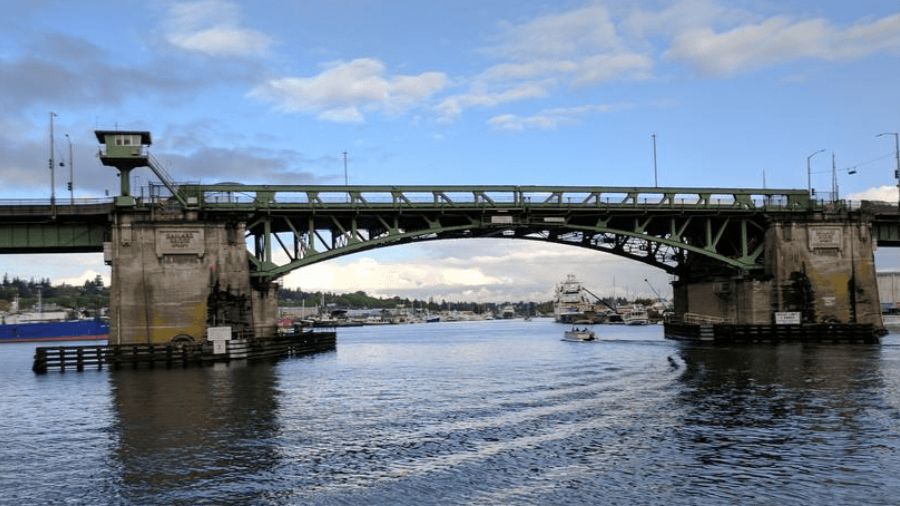Washington roads getting ‘closer to precipice’ with repairs needed
Jun 15, 2023, 5:01 AM

Roads in Washington state are generally safe, but any trip over the Ship Canal Bridge or other freeways will tell you that they aren’t exactly in great shape, and likely in need of repairs. (Photo by Karen Ducey/Getty Images)
(Photo by Karen Ducey/Getty Images)
Roads in Washington state are generally safe, but any trip over the Ship Canal Bridge or other freeways will tell you that they aren’t exactly in great shape, and likely in need of repairs.
Washington has greatly underfunded its state roads over the last few decades. You know that just by driving over all the bumps, dips, and potholes.
More Chokepoints: Diesel cleanup continues three months after I-5 crash in Lacey
The Legislature has done a poor job of prioritizing the maintenance and preservation of our state highways and freeways. That’s not just me saying that. This comes directly from the Washington Department of Transportation (WSDOT).
We can leave the ‘why’ of this for another day so we can look at the actual conditions we drive in.
According to the WSDOT’s recently released , 92% of the pavement is in good to fair condition.
“Our roadways are in pretty good condition, but what is happening is we’re getting closer and closer to kind of a precipice,” State Pavement Management Engineer Karen Strauss said. “It’s really difficult because pavement degrades slowly, so to sound an alarm, it doesn’t look alarming until things degrade.”
The best time to fix roads is when they are in good to fair condition. The longer you wait the worse the conditions become, and the more expensive it becomes to fix them.
WSDOT estimates it will take $2.69 billion over the next two decades just to keep with preservation. That’s $112 million a year, and the Legislature just hasn’t earmarked funding to keep up.
“The backlog of need is about 50% funded, so we could have another 50% of funding to actually attack it,” Strauss said. “We’re quite underfunded in what we would love to have to actually address the pavements.”
That deferred maintenance backlog has grown to $521 million. That’s up 52% in just the last five years.
“We don’t want to be reactive,” Strauss said. “We don’t want to be working on the worst first. That’s not how pavement management is done, but when there is not enough funding to do it, we do end up band-aiding the system, which is just not a long-term solution.”
The Move Ahead Washington package that passed in 2022 did earmark $750 million for maintenance, but it’s still not enough to meet the need.
Contributing to the backlog is the lack of people to do that maintenance and preservation work. WSDOT estimates that 1.7 million people working in the transportation infrastructure sector will leave their jobs over the next decade. You add that to the loss of 175 maintenance workers over Governor Inslee’s vaccine mandate, and the severity of the situation becomes clear.
“I think even if we have all our bodies, the funding piece, especially as it relates to the preservation, creates so much more work for maintenance that it’s difficult to stay on top of any one thing,” WSDOT Roadway Operations Manager Jim Weston said.
The agency is working hard to fill positions and is allowing some new employees to train and earn their commercial driver’s licenses while on the job.
So what does that mean for you?
“Safety is our number one,” Strauss emphasized. “When we call a road not good anymore, it’s because it’s cracked or rough. It is not because it’s not serviceable.”
If a road becomes dangerous, the state will close it. We just saw that recently with the ramp between State Route 99 and the West Seattle Bridge.
If you want the priorities to change in Olympia and put more of your tax dollars into the preservation and maintaining our roads, you have to talk to your elected leaders.
Check out more of Chris’ Chokepoints.












